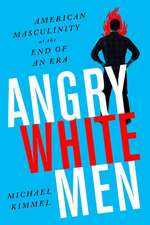Landscapes of Communism: A History Through Buildings
Autor Owen Hatherleyen Limba Engleză Hardback – 29 feb 2016
Landscapes of Communism is a journey of historical discovery, plunging us into the lost world of socialist architecture. Owen Hatherley, a brilliant, witty, young urban critic shows how power was wielded in these societies by tracing the sharp, sudden zigzags of official communist architectural style: the superstitious despotic rococo of high Stalinism, with its jingoistic memorials, palaces, and secret policemen’s castles; East Germany’s obsession with prefabricated concrete panels; and the metro systems of Moscow and Prague, a spectacular vindication of public space that went further than any avant-garde ever dared. Throughout his journeys across the former Soviet empire, Hatherley asks what, if anything, can be reclaimed from the ruins of Communism—what residue can inform our contemporary ideas of urban life?
Preț: 142.05 lei
Nou
27.18€ • 28.28$ • 22.44£
Carte indisponibilă temporar
Specificații
ISBN-10: 1620971887
Pagini: 624
Ilustrații: B&W photos throughout
Dimensiuni: 156 x 235 mm
Greutate: 1 kg
Editura: The New Press
Colecția New Press, The
Recenzii
—Kirkus Reviews
"Owen Hatherley’s eye is so acute, his architectural expertise so lightly deployed, his sympathies so wide and generous, that reading it is like a tour of a whole world of unsuspected curiosities and richnesses conducted by a guide whose wit is as refreshing as his knowledge is profound…I loved it, and I’ll go back to it again and again."
—Philip Pullman
"In the craven world of architectural criticism Hatherley is that rarest of things: a brave, incisive, elegant and erudite writer, whose books dissect the contemporary built environment to reveal the political fantasies and social realities it embodies."
—Will Self
"Hatherley has a wonderful eye for buildings and space, a good grasp of the history that spawned them, and a deft way of describing them...I’d better take his book, big though it is, in my backpack next time I go to Warsaw, Lviv, Bucharest or elsewhere in the old Soviet empire. I might even throw out Sytin and take it to Moscow."
—London Review of Books
"[Hatherley's] grasp of twentieth century social and cultural history is impressive, and he has created a witty, intimate and insightful book."
—Sunday Times (London)
"Owen Hatherley goes in search of socialism via an epic and insightful study of Eastern bloc architecture."
—The Guardian
“Hatherley takes us on an extraordinary tour of architecture in what could loosely be called the ex-Iron Curtain countries."
—The Independent
Notă biografică
Owen Hatherley writes regularly on aesthetics and politics for the Architectural Review, The Calvert Journal, Dezeen, the Guardian, Jacobin and the London Review of Books. He is the author of several books, most recently Landscapes of Communism, The Ministry of Nostalgia and The Chaplin Machine.
Descriere
'In the craven world of architectural criticism Hatherley is that rarest of things: a brave, incisive, elegant and erudite writer, whose books dissect the contemporary built environment to reveal the political fantasies and social realities it embodies' Will Self
During the course of the twentieth century, communism took power in Eastern Europe and remade the city in its own image. Ransacking the urban planning of the grand imperial past, it set out to transform everyday life, its sweeping boulevards, epic high-rise and vast housing estates an emphatic declaration of a non-capitalist idea. Now, the regimes that built them are dead and long gone, but from Warsaw to Berlin, Moscow to post-Revolution Kiev, the buildings, their most obvious legacy, remain, populated by people whose lives were scattered and jeopardized by the collapse of communism and the introduction of capitalism.
Landscapes of Communism is an intimate history of twentieth-century communist Europe told through its buildings; it is, too, a book about power, and what power does in cities. Most of all, Landscapes of Communism is a revelatory journey of discovery, plunging us into the maelstrom of socialist architecture. As we submerge into the metros, walk the massive, multi-lane magistrale and pause at milk bars in the microrayons, who knows what we might find?





















